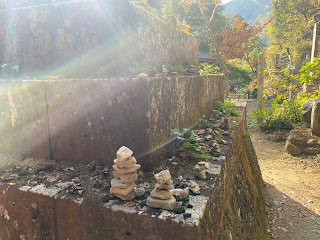The lord Avaloketishvara, the Boddhisattava of compassion, is considered patron deity of Tibet. Tibetan Buddhist myth has it that the Tibetans are descendant of Boddhisattva monkey, an emanation of Avaloketishvara, and Goddess Tara. His Holiness the Dalai Lama is considered manifestation of Avaloketishvara, the Boddhisattva of compassion.
Avaloketishvara is widely venerated by those practicing Mahayana form of Buddhism. It is known by Kanon sama or Kanon Bosatsu in Japanese. However, Kanon sama, the Lord Avaloketishvara, in Japan is depicted in female form, whereas Chenrezig, the Lord in Tibet, is revered in male form.
100 Kanonsama Temples in Japan
There are many Temples of Kanon sama in Japan, but 100 are designated for devotees' pilgrimage. 67 of them are in Kanto areas and 33 are in Kansai area. In Kanto area 34 of them are in Chichibu area of Saitama prefecture.
Pilgrimage or hiking through these regions to visit the Temples will reveal how Buddhism was once popular and wide spread in these regions. Kubo Daishi, the founder of Japanese Shingon Buddhism, and the Lord Fudomyo, the patron deity of Tantraism, could also be found in these temples.
Cairns, Tholo in Tibetan
Each Temple has different manifestation of the Lord Avaloketishvara and some peculiar characteristic. For example, Kanon-In, the 31st Temple, in Chichibu region has 296 steep steps to climb uphill to reach the Temple. The 296 steps are said to represent the 276 words in Hangyashigyo, the Heart Sutra text, and 20 words of prayers following it. If you climb the steps reciting the Heart sutra, at the end of the recitation and the end prayer you reach before the Temple. The rocks beside the Temple have images of religious status said to be curved with Kubodaishi's nails.
The 34th Temple, Suesenji
Tibetan Heart Sutra text is said to have one bampo. A bampo has three hundred sholokas. A sholoka has four tshig-rkang, lines of verses. Therefore, it should have 1200 lines. The one in the Sherig Parkhang's prayer book (nyer mkho'i zhal 'don kun phan nyi 'od ces bya ba bzhugs so, 2018 edition, p-214) has 100 lines ending with a strok, shed.
Nagatoro Iwadatemi
and the river, Chichibu in Saitama Ken
+012.jpg)




